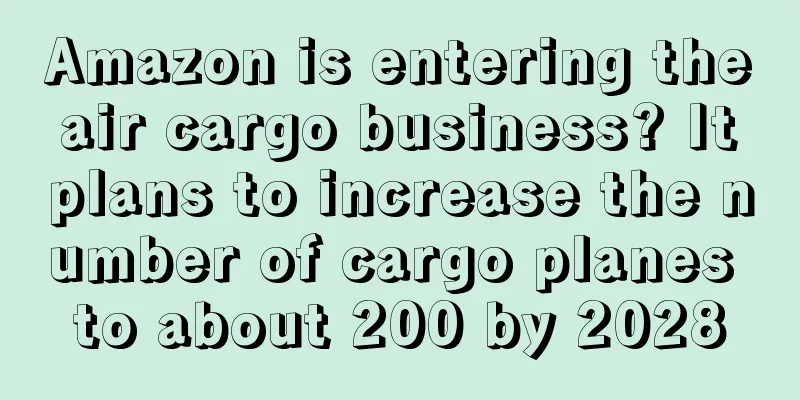Amazon starts to shrink its FBA business! Is there an oversupply of warehouse capacity?

|
Amazon recently announced a new move for FBA, which will enter an unprecedented strategic contraction period! It is expected to slow down the expansion of FBA logistics and even reduce the transportation capacity in some regions! This matter can be traced back to the epidemic. Everyone knows that logistics costs have skyrocketed after the epidemic. Amazon has also invested heavily in FBA logistics. In the second half of last year alone, Amazon expanded the number of front-line logistics positions and temporary positions by more than 270,000 people! Last year's financial report showed that logistics costs were 4 billion US dollars higher than the same period! On this basis, the first quarter of this year increased by another 2 billion US dollars, and the total logistics costs have reached 19.5 billion US dollars! This cost would not be a problem if Amazon's sales were good. The problem is that the Q1 financial report released at the end of last month showed that Amazon's first-quarter sales were seriously below expectations, setting the slowest growth rate in more than 20 years of history. The profit for the entire first quarter was about 3.7 billion US dollars, more than half of the 8.9 billion US dollars in profit in the first quarter of last year. Although profits have been cut in half, FBA’s costs have not dropped. Now that Amazon has to tighten its belt, the biggest cost component of Amazon logistics has been put on the agenda. In an internal conference call at Amazon last week, some senior executives said that the warehouse recruitment was too fast and the supply of masks and hand sanitizers could not keep up. I was a little overwhelmed when I saw this. This is Amazon, and they are worried about the masks and hand sanitizers for frontline workers? Amazon's CFO Brian also mentioned that because a large number of employees returned to work from the holidays, Amazon's logistics system quickly turned from understaffed to overstaffed , which in turn led to warehouse congestion and a decline in processing capacity. Therefore, in this meeting, the top management confirmed the strategic transformation direction of Amazon FBA logistics, which will shift from expanding the overall scale of warehouses and logistics systems to focusing on improving the existing warehouse capacity and cost efficiency . In other words, there are too many people, so we won’t hire any more, and we won’t build new warehouses. We will just have to use up the existing capacity first. The landlords will also have to tighten their belts to make ends meet! After reading the content of the meeting, I felt a little strange. Is Amazon's shipping capacity overflowing? If it is overflowing, why does the US site still have shipping and storage restrictions? Shouldn't it have been opened long ago to allow everyone to replenish stocks at will? In fact, although the restrictions are not as tight as before, there are still shipping and storage restrictions. It must be that Amazon is looking for an excuse to cut the high FBA costs. Let's think about it in detail. What butterfly effect will the slowed expansion of FBA have? The first is that the expansion has slowed down, but the current transportation capacity still cannot meet the demand for direct replenishment. The day of fully lifting the shipping restrictions may be postponed indefinitely, and warehousing restrictions and ASIN-level shipping restrictions must become normalized policies. Second, the senior management generally believes that there is an oversupply of staff, but they have announced that there is no plan to lay off employees for the time being, so they have to find other places to absorb the extra staff and transportation capacity. I suddenly thought of a news we wrote at the end of last month, that Amazon opened its Prime delivery service to independent sites. This service connects the entire FBA logistics to independent stores such as Shopify. After the independent store places an order, FBA logistics will be automatically arranged for delivery. FBA logistics can be arranged to pick up the goods at the seller's overseas warehouse, or it can be stored in the FBA warehouse for a fee. The entire delivery process is the same as that of Amazon sellers. (For detailed content, click here to view previous reports) The task of system docking is not easy. To be conservative, Amazon has already considered the possible overcapacity at least in the middle of last year . My brother-in-law and Andy are very shrewd. |
<<: It attracted $300 million in January! It has become a super money-making beast overseas
Recommend
What is Remote Fulfillment with FBA? Review of Remote Fulfillment with FBA
Amazon Logistics (FBA) has launched the Remote Ful...
What is Ferryman Inc? Ferryman Inc Review
Ferryman Inc is a consulting company specializing ...
What is Best Deal? Best Deal Review
Best Deal is a time-limited promotion, referred to...
What is Staples? Staples Review
Staples is a well-known office supply company in t...
What is FameBit? FameBit Review
Fame Bit is a YouTube marketing platform that allo...
Amazon sellers, here are all the product selection steps and product selection tools you need!
Product selection is an ongoing task for sellers t...
Useful Information | Frequently Asked Questions about Using Amazon Variations and Variation Abuse
There are more and more cases of sellers having t...
Amazon's official new plan! The changes that sellers have been waiting for a long time
Recently, Amazon launched a new program in the of...
It is said that advertising on Amazon needs to be optimized. How should it be optimized?
Amazon's Q4 peak season is coming, and many s...
Are all Amazon-operated products on sale at half price?
Because of the existence of its own products, Amaz...
The latest trending searches for St. Patrick's Day in the US! Be the first to know about potential hits
It is learned that the United States will usher in...
What is Amazon Go? Amazon Go Review
Amazon Go is an unmanned convenience store launche...
Shopify Black Friday Cyber Monday sales hit record highs! Consumers in these countries spend the most
It is learned that according to data released by S...
Amazon's front desk is making another adjustment. Is this a price war or a new traffic entrance?
“ Is there another overhaul on Amazon’s front desk...
The demand for toys in the US market will slow down in 2023, but these three categories will grow against the trend
It is learned that recently, market research compa...









